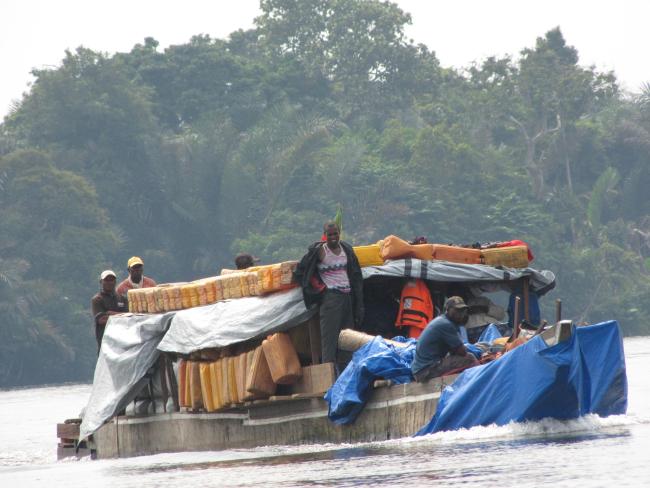Grands affluents
Grands affluents
- Country:
- Congo
- Site number:
- 1742
- Area:
- 5,908,074.0 ha
- Designation date:
- 13-12-2007
- Coordinates:
- 00°28'12"N 17°04'43"E
- Transboundary Site:
Carousel
CarouselMaterials presented on this website, particularly maps and territorial information, are as-is and as-available based on available data and do not imply the expression of any opinion whatsoever on the part of the Secretariat of the Ramsar Convention concerning the legal status of any country, territory, city or area, or of its authorities, or concerning the delimitation of its frontiers or boundaries.
The Site consists of large expanses along the Congo River, which with its tributaries forms the most important hydrological basin in Central Africa. It features lakes, ponds, marshes, flooded and swampy forests, along permanent and temporary rivers such as the Ubangi, Sangha, Likouala-Mossaka and Alima, all Congo tributaries which give the Site its name. This diverse biotope hosts a wide variety of plants, macroinvertebrates, fish, birds, reptiles and aquatic mammals. It is home to endangered mammals such as forest elephant, gorilla and hippopotamus, and offers refuge to migratory fish and bird species. The migration of hippos along the Likouala-Mossaka and the Sangha maintains the depth of the rivers, and allows fish species belonging to the families Distichodontidae, Cyprinidae, Citharinidae and Clariidae to be present even during the dry season. The Site is prominent in the socio-economic development of the sub-region: the Ubangi and Congo rivers are used to transport goods between Central African Republic and Chad and the Atlantic Ocean. It supplies fish products to Brazzaville and Pointe Noire. The surrounding region is a development zone for forestry and cash crops such as oil palm and cocoa; rainforests in the Congo Basin are being cleared at an alarming rate amid global demand for mineral, energy and wood resources, and new roads have opened up vast tracts of virgin rainforests to legal and illegal loggers, miners and others. In this context, access to some of the Site’s water bodies and forests is restricted or regulated.
Transboundary designation:
The Site is part of the Complexe Transfrontalier Lac Télé - Grands Affluents - Lac Tumba Transboundary Ramsar Site, together with Lac Télé/Likouala-aux-herbes (Ramsar Site no. 950) in Congo and Ngiri-Tumba-Maindombe site (Ramsar Site no. 1784) in the Democratic Republic of Congo. The Transboundary Ramsar Site was established in June 2017.
Administrative region:
Plateaux, Cuvette, Sangha et Likouala
Last publication date:
08-09-2017
Ramsar Information Sheet (RIS)
- CG1742RIS_1709_fr.pdf
- CG1742RISformer_170307.pdf
- CG1742map2007.pdf
- CG1742_taxo170313.doc
Archived RIS
Site map
Additional reports and documents
Taxonomic lists of plant and animal species occurring in the site
Other published literature




